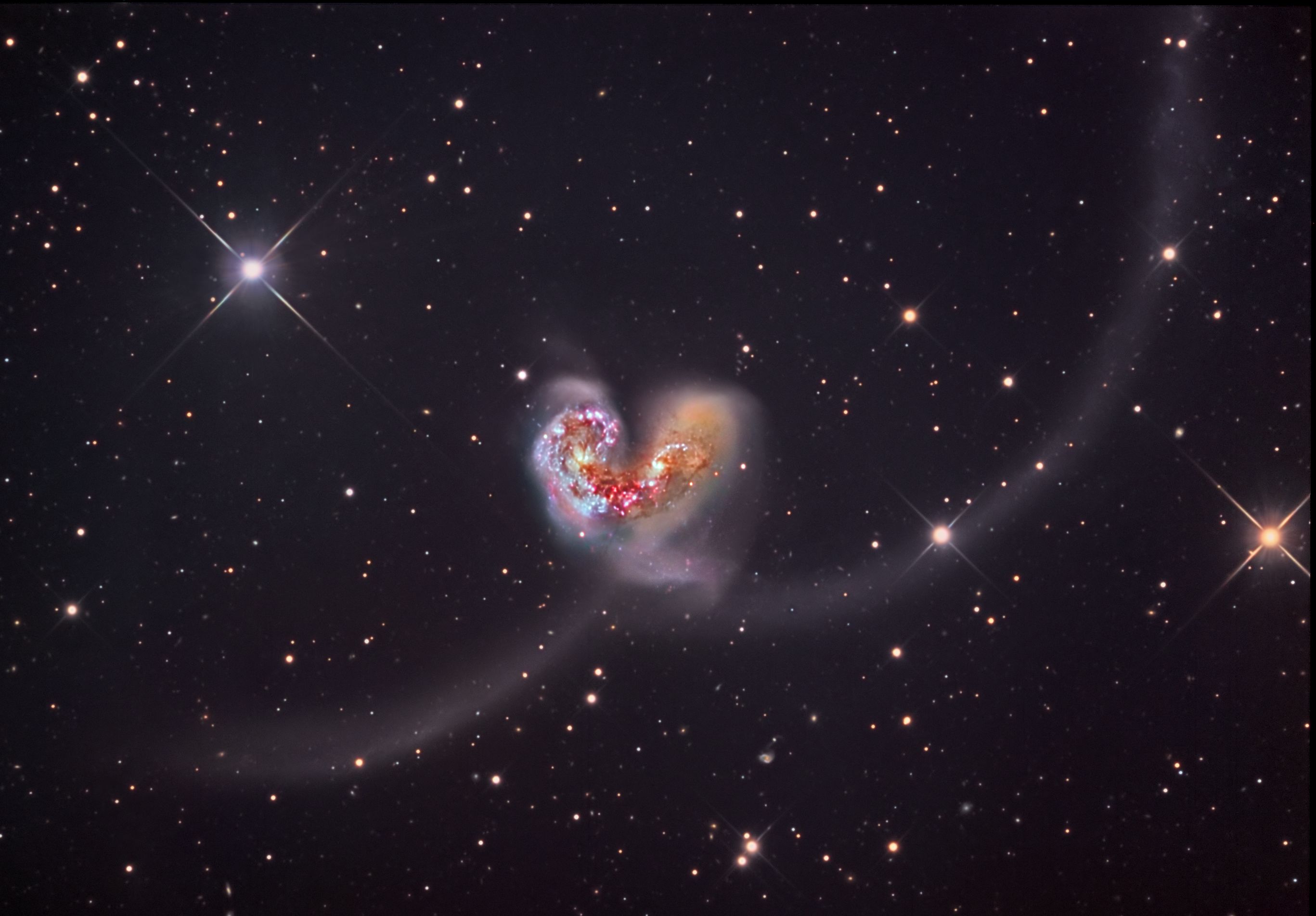Collisions between galaxies are in the scale of the Universe (all references to time in this article, I'll refer to the "Space Days") are on the agenda. Almost every day somewhere in the space in the universe galaxies collide. But ... whether the word "collision" is the right word? No. These collisions are not full of explosions, fireworks, sounds, and anything that is a special effect, no! These "collisions" of galaxies are silent, very peaceful and long-term process in which the two galaxies are mixed together. This process is very slow, there are no unnecessary special effects. Even in these processes of merging galaxies almost never comes to collisions between stars [sic!] - and that's because the celestial bodies in the form of stars / planets represent only 0.0005% of the entire galaxy.
But! systems of galaxies, which are "clash" is not simply fly by himself without any harm, and not merge with each other in one moment. This can be more comparable with the ball striking the ground. At the first meeting of the galaxies are mixed together, pass through each other and move away slightly, but after that, galaxies again get close to each other, re-mix, and so until reach the stable state. Therefore, the two spiral galaxies mixing together form an elliptical galaxy.
Here I present you some pictures of interacting galaxies.
 | |||||
| Collision of two galaxies (NGC 4038 and NGC 4039) called "insect antennae". |
 |
| Collisions of two galaxies (NGC 2207 and IC- 2163) in Great Dog Constellation. |
 |
| Collision of two galaxies (NGC 6872 and NGC 4970) in the
Peacock Constellation.
|

Brak komentarzy:
Prześlij komentarz